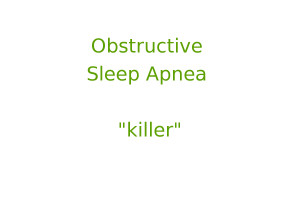Klinika Pneumonologii i Alergologii Wieku Dziecięcego Akademii Medycznej w Warszawie
The results of research on "Obstructive sleep apnea — “killer”" conducted by Andrzej Hasiec, Łukasz Szumowski, Franciszek Walczak (Forum Medycyny Rodzinnej (2012;6(3):103-114).).
Breathing disorders during sleep are heterogeneous group of diseases, which include obstructive sleep apnea syndrome. Family medical history can enable the initial diagnosis. The main cause of the disease are developmental defects of the upper respiratory tract and craniofacial anomalies. One of the most important risk factors is obesity.
Smoking, sleeping pills, and coffee have negative effect. During sleep there is an excessive decrease in muscle tension of the soft palate, uvula, tongue and back of the throat. This leads to an impairment of airflow (snoring) and periodic lack of airflow (apnea). Constant sleep apnea can also cause problems at everyday activities such as driving (serious road accidents including frontal collisions). Obstructive sleep apnea has a negative impact on overall morbidity especially on cardiac health status. The patients suffering from sleep apnea have increased sympathetic activity and are in high risk of developing hypertension, coronary artery disease and arrhythmias, including atrial fibrillation, ventricular arrhythmias or even sudden cardiac death.
Polysomnography diagnosis sleep apnea, can show progress of the disease and helps to establish the treatment. The complexity of symptoms and patophysiology of the disease requires individual treatment. Laryngological correction such as plastic surgery of the palate, nasal septum curvature surgery, or removal of hypertrophic tonsils might be necessary. Lifestyle changes, weight reduction, withdrawal of drugs that adversely affect the breath are also important. One of the documented treatment options is to supply air to the respiratory tract under positive pressure during sleep using an air pump connected to a special face mask covering the nose or nose and mouth (CPAP, autoCPAP, BiPAP). Positive pressure causes mechanical stiffening of the upper respiratory tract, prevents the throat from collapsing during sleep and decreasing oxygen saturation and consequently the whole body hypoxia, including the central nervous system, kidneys and heart.
The complete study "Obstructive sleep apnea — “killer”" (Andrzej Hasiec, Łukasz Szumowski, Franciszek Walczak) in pdf file format:
The original text taken from a:
![]() https://journals.viamedica.pl/forum_medycyny_rodzinnej/article/view/19243
https://journals.viamedica.pl/forum_medycyny_rodzinnej/article/view/19243
Forum Medycyny Rodzinnej (2012;6(3):103-114).
Translations
| The article "Obstructive sleep apnea — “killer”" in other languages | |
|---|---|
| Obturacyjny bezdech senny – „zabójca” (Andrzej Hasiec, Łukasz Szumowski, Franciszek Walczak) po Polsku: Obturacyjny bezdech senny – „zabójca” Klinika Pneumonologii i Alergologii Wieku Dziecięcego Akademii Medycznej w Warszawie |  |













Comments
“Obstructive sleep apnea — “killer””